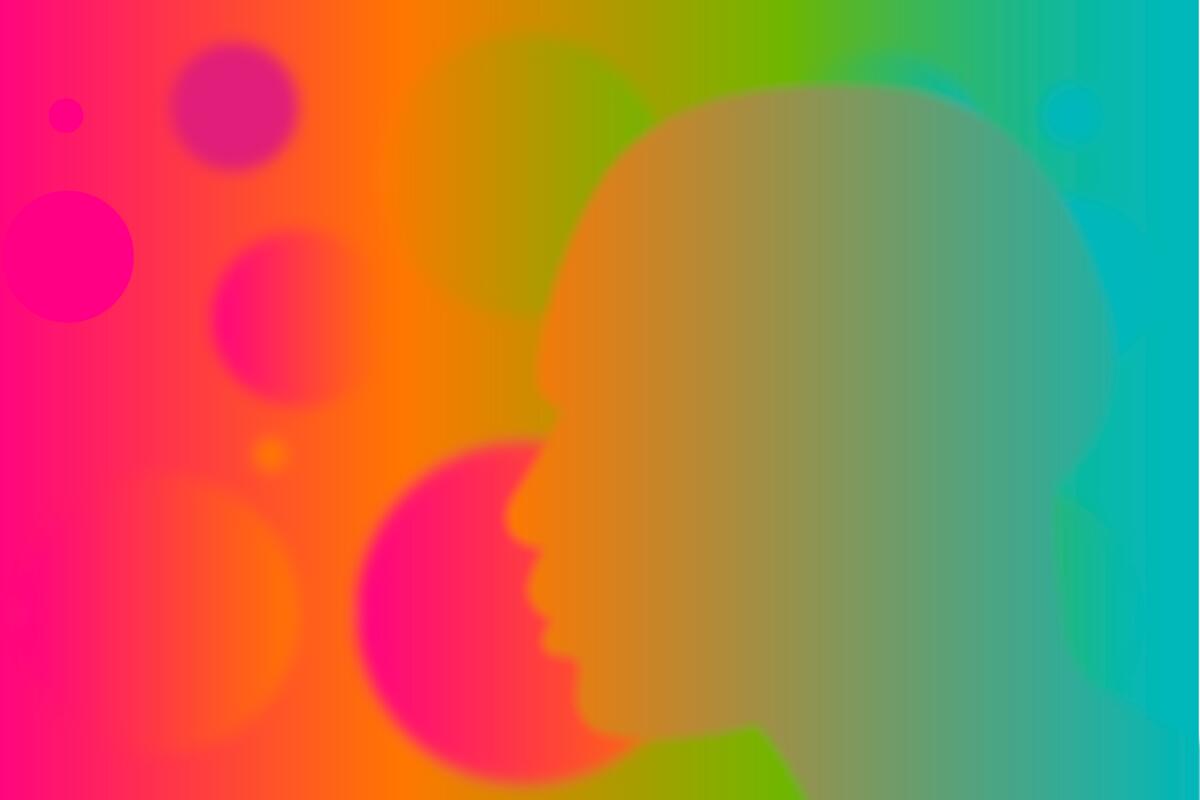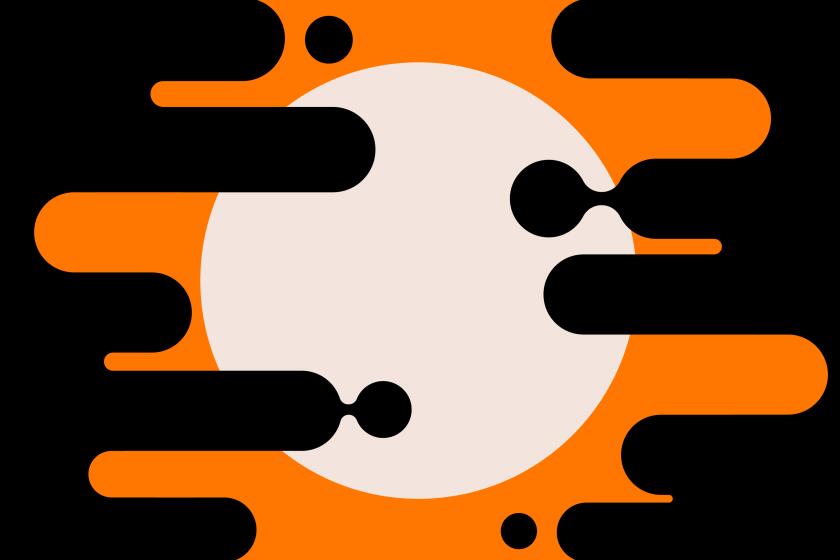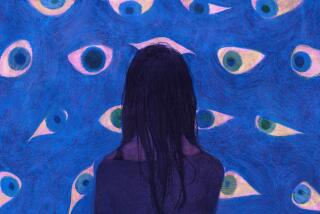Hearing about bipolar disorder in the news or on social media? Here’s what you should know

- Share via
In the news or on social media, we hear the term “bipolar disorder” a lot.
Whether it’s celebrities opening up about their diagnoses or an investigation finding that a person has struggled with the illness, such accounts often shape people’s perceptions of this mood disorder that can manifest in countless ways and be difficult to diagnose.
The Depression and Bipolar Support Alliance defines bipolar disorder as a treatable mental health condition marked by extreme changes in mood, thought, energy and behavior and notes that “it’s not a character flaw or a sign of personal weakness.”
A widely known symptom of the illness is manic episodes, which are marked by elevated changes in mood or behavior. But many people with a bipolar disorder diagnosis more commonly experience depressive episodes.
“It’s important to recognize that bipolar disorder is a mental illness, meaning that there isn’t necessarily a physical underpinning for it,” said Dr. Curley Bonds, chief medical officer for the L.A. County Department of Mental Health.
There’s also a school of thought among some mental health professionals in which the condition is understood as a spectrum, rather than in rigid categories.
Mental health experts spoke with The Times about how bipolar disorder is defined, the push to understanding the condition on a spectrum, how people are treated and the stigma that can come with a diagnosis.
We dive into how we actually know mental health issues are on the rise, and how such data are shaped by our increasing awareness of mental health issues.
What to know about bipolar disorder
The illness affects men and women equally, with about 2.8% of the U.S. population diagnosed with bipolar disorder and nearly 83% of cases classified as severe, according to the National Alliance on Mental Illness, or NAMI.
The alliance says scientists believe the mental illness is caused by several factors, including genetics, stress and brain structure and function.
The Diagnostic and Statistical Manual of Mental Disorders (fifth edition) categorizes four types of bipolar disorder.
- Bipolar I, according to the DSM-5, is a disorder that can exist both with and without psychotic episodes. Symptoms can fluctuate between manic episodes and, more often, depressive episodes. According to NAMI, for a person to be diagnosed with bipolar I, their manic episodes must last at least seven days or be so severe that hospitalization is required. Bonds said this is what most people think of when they hear the term “bipolar disorder.”
- Bipolar II consists of depressive and hypomanic episodes (periods marked by overactive and excited behavior, less extreme than mania) that alternate. A person with Bipolar II will never have a “full” manic episode.
- Cyclothymic disorder refers to a cycle of up and down moods — of hypomania and mild depression — for at least two years.
- Some patients may be diagnosed with “other specified bipolar and related disorder,” previously referred to as “bipolar disorder-not otherwise specified.” This diagnosis means a person doesn’t really fit the characteristics of the other types of bipolar disorder but that the person does have clear manic and depressive symptoms.
A list of crisis hotlines, low-fee and sliding scale counseling, support groups, and mindfulness and meditation services
Bipolar disorder as a spectrum
Our understanding of bipolar disorder, as well as how we refer to it, has evolved over time. The name has changed from manic depressive illness or manic depression to bipolar disorder (the term used in the fifth edition of Diagnostic and Statistical Manual of Mental Disorders, or DSM-V, and by the National Institute of Mental Health, among others).
But some are advocating for thinking of the mental illness as occurring on a spectrum, rather than in the categories outlined in the DSM-V.
Suicide prevention and crisis counseling resources
If you or someone you know is struggling with suicidal thoughts, seek help from a professional and call 9-8-8. The United States’ first nationwide three-digit mental health crisis hotline 988 will connect callers with trained mental health counselors. Text “HOME” to 741741 in the U.S. and Canada to reach the Crisis Text Line.
That includes Dr. Jim Phelps, a psychiatrist who has written articles on this topic and is a member of the International Society of Bipolar Disorders. The core of his argument is that no two people experience the same combination or severity of symptoms; instead, they experience increasing degrees of bipolarity.
Today, Phelps said most mental health professionals follow the DSM-5 categories and make a diagnosis based on whether a patient presents the exact characteristics the manual outlines.
“So what I’ve been trying to do for the last 20 years is really push on the idea that ‘No, it is a spectrum, and you need to approach it that way diagnostically,’” Phelps said.
A study published in 2006 found that up to 69% of patients with bipolar disorder were initially misdiagnosed, usually with major depression disorder. A more recent study published in 2022 found that nearly 70% of bipolar patients are initially misdiagnosed (with depression), and a third or more still hadn’t gotten an appropriate diagnosis after a decade.
This can happen, Phelps said, because people with bipolar disorders, especially Bipolar II, present with depressive symptoms more often than with mania.
He said that people won’t know they have bipolar disorder because they’ve never been manic, or they’ve experienced only hypomania, which can sometimes feel like a really good day.
“So if you have really good days, like a string of them, you just say, ‘Well, this is how life is supposed to be,’ and [a person] might go back into that depression again,” Phelps said.
In this scenario, the person thinks depression alone is the problem.
They may have “no recognition that their depressions, which come and go, are only part of the problem, and that when they’re not depressed, they can be in the middle of a mood range,” he said.
This illness could also be misdiagnosed as a personality disorder. Bonds said erratic behavior (which can be a symptom of Bipolar I) could be chalked up to a person having interpersonal difficulties “because they may see or do things from this manic episode that alienate them from others.”
The path to accurate treatment, Phelps says, includes recognizing the statistical markers for bipolarity (a family history, depressive episodes and mania brought on by antidepressants).
When you’re worried yourself, how can you make your child feel comfortable talking to you about their mental health struggles?
Diagnosis and treatment
Bipolar disorder “is something that a lot of people who are very successful have lived with for [most] of their lives, and they’ve been in treatment,” Bonds said.
Getting treatment depends on the person and their type of diagnosis.
According to the Depression and Bipolar Support Alliance, if people have depressions that go away periodically and then return, they should ask themselves the following questions.
- Have you had periods lasting four or more days when your mood was especially energetic or irritable?
- During these periods were you:
- Feeling abnormally self-confident or social?
- Needing less sleep or more energetic?
- Unusually talkative or hyper?
- Irritable or quick to anger?
- Thinking faster than usual?
- More easily distracted or having trouble concentrating?
- More goal-oriented or productive at work, school or home?
- More involved in pleasurable activities, such as sex or spending money?
- Did you feel or did others say you were doing or saying things that were unusual, abnormal or not like your usual self?
If you answered “yes” to any of these questions, the alliance suggests you talk with your healthcare provider to find out whether you may be experiencing hypomania.
Bonds suggests that doctors ask patients about the history of this increased energy and about family histories of mental illness. If a doctor doesn’t ask, a patient should share this information.
If a person does seek mental health services, Phelps said, that process often begins with a referral to a mental health specialist by your primary care doctor. However, Phelps cautioned, the psychiatrist or psychotherapist you were referred to may not be taking new patients or isn’t covered by insurance, and the primary doctor may prescribe antidepressants. But those drugs can make bipolar disorders worse by triggering a manic episode: “That’s the big problem,” he said.
Effective treatments can include psychotherapy, medication and self-management strategies (such as education and recognition of an episode’s early symptoms).
“Peer support can be very critical in helping a person be able to live comfortably with this disorder and to keep the episodes at bay,” Bonds said.
In L.A. County, CARE Court will be implemented next year. Here’s how you can access it.
Dispelling stigma
Bonds believes most stigma comes from a lack of education.
Unlike a physical illness where a scan of the body or a blood test can reveal what’s wrong, mental illness can be more elusive to understand and pinpoint “and can often take years for someone who has bipolar disorder to get a proper diagnosis,” he said.
Dr. Devika Bhushan, a pediatrician and California’s former acting surgeon general, said that as much as society stigmatizes people who are diagnosed with bipolar disorder, people also struggle with internalized shame.
“I think almost everybody who’s diagnosed with the disorder has in their own minds, at the time of diagnosis, their own set of self-referential stigma that is linked to all the stereotypes we’ve grown up with,” Bhushan said, who recently wrote about her own experience.
She believes that society’s fears of people with bipolar disorder come from stereotypes that paint them as unpredictable, untrustworthy or violent.
She said people have told her, “I would have never guessed that about you” and intended it as a compliment.
“What you’re saying is that I don’t associate you with all of the prevailing cultural norms and stereotypes that we attach to these terms,” Bhushan said.
She added, “the real problem there is that we need to change the cultural context and all the stereotypes and labels that come with that diagnosis.”
“It’s learning people’s individual stories and the nuances of their journeys that [can help] people really, like with any stereotype, dispel that two-dimensional view of what it looks like to have bipolar disorder,” she said.
About The Times Utility Journalism Team
This article is from The Times’ Utility Journalism Team. Our mission is to be essential to the lives of Southern Californians by publishing information that solves problems, answers questions and helps with decision making. We serve audiences in and around Los Angeles — including current Times subscribers and diverse communities that haven’t historically had their needs met by our coverage.
How can we be useful to you and your community? Email utility (at) latimes.com or one of our journalists: Jon Healey, Ada Tseng, Jessica Roy and Karen Garcia.
More to Read
Get Group Therapy
Life is stressful. Our weekly mental wellness newsletter can help.
You may occasionally receive promotional content from the Los Angeles Times.














